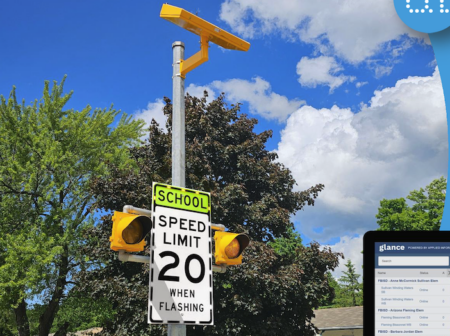Japanese technology multinational Sumitomo Electric Industries has launched a new radar-based pedestrian detector for Driving Safety Support Systems (DSSS) to help reduce traffic accidents, particularly those involving senior citizens.
Although the number of traffic fatalities has been decreasing in Japan year by year (3,694 in 2017), elderly adults (65 and older) account for more than half of the death toll, and statistics show that there has been no major reduction for this age group.
The Japanese government considers that early implementation of measures to address these figures is a high priority. As part of its contribution to help reduce traffic accidents, Sumitomo Electric has continued its efforts to develop DSSS based on vehicle-to-infrastructure (V2I) integration. As one of the typical subsystems/services of DSSS, prefectural police departments and auto makers have cooperatively operated Right-turn Collision Prevention System/Right-turn Crossing Recognition Enhancement System.
This service is enabled by a wireless roadside unit (RSU) that provides information on the presence of pedestrians on crosswalks, and oncoming vehicles detected by roadside sensors, to alert the driver in a vehicle turning right at an intersection via in-car audio and visual warnings.
In addition to wireless RSUs and vehicle detectors already launched on the market, Sumitomo has now released a new pedestrian detector. In March, the detector was delivered to five prefectural police departments in Japan for pilot projects, including the Osaka Prefectural Police Department.
The new pedestrian detector uses a 24GHz-band millimeter-wave radar, which is robust against variable and extreme environmental conditions day and night, such as bright sunshine, fog, rain, sleet, snow and other weather conditions.
The millimeter-wave radar transmits a radio signal and receives its reflection from an object to measure the distance between the two. The company’s proprietary algorithm incorporated into the product tracks and predicts the movement of pedestrians by analyzing characteristic information conveyed by the reflected wave. The high accuracy of this technique enables the unit to detect pedestrians even when they are behind passing vehicles.
One difficult challenge for a millimeter-wave radar was to achieve incompatible tasks of covering a wide area range in close proximity to the unit and extending its detectable distance.
However, Sumitomo has developed multiple-channel antennas, and a signal processing technique that uses them, enabling a wide detection area for the unit when it is installed on a pedestrian signal pole near a crosswalk.
The product detects pedestrians both in the waiting area in close proximity and those on the crosswalk, whether the crosswalk is small or large. Sumitomo says that due to this particular feature, the detector can be installed in a greater variety of locations, helping to reduce pedestrian-vehicle accidents and create a safer traffic environment.




